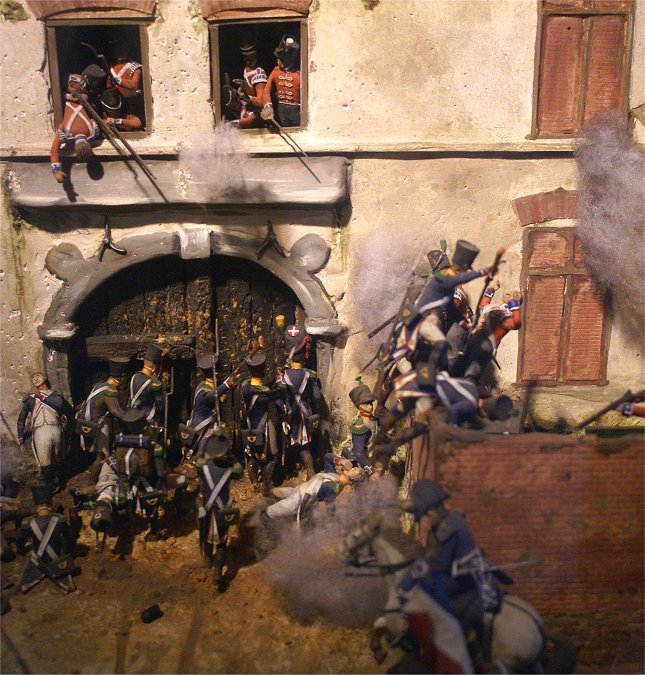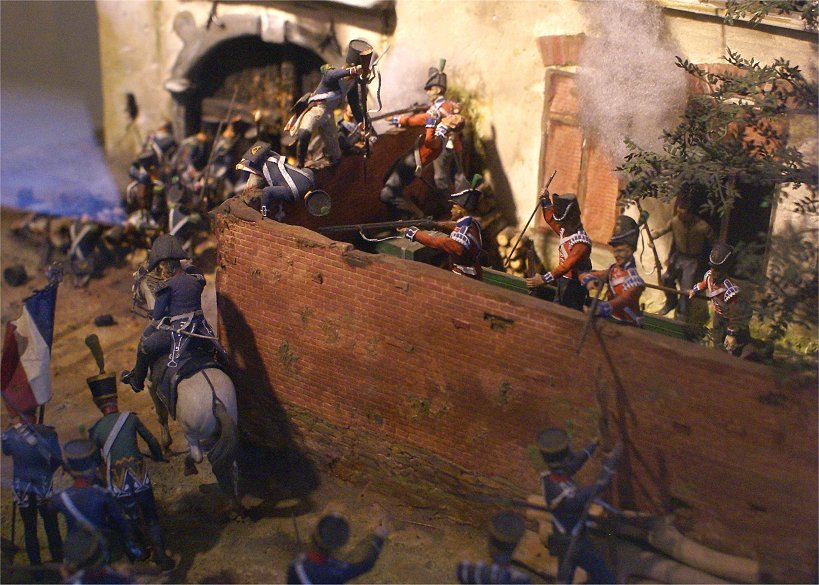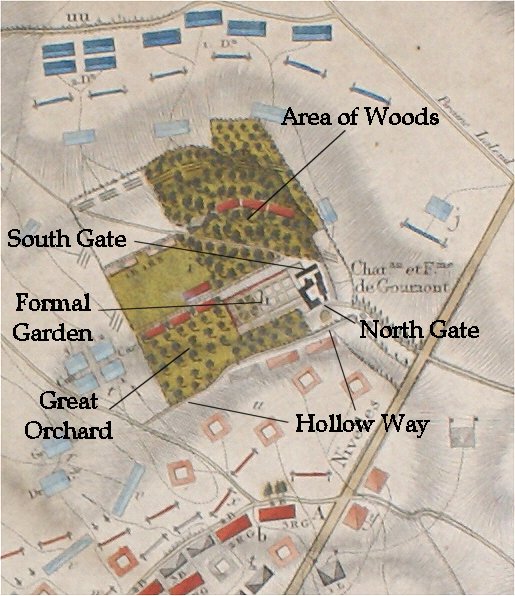
| North is down on this map of the Chateau Hougomont, somtimes spelled Hougoumont or more properly the Chateau de Goumont. The defense was commanded by Lt Col Macdonnell. The wooded area was defended by 1st Bn, 2nd Nassau Regiment and Hanoverian Jagers and Landwehr. The light company of the 2nd Bn, Coldstream Guards under Lt Col Wyndham defended the chateau. The light company of 2nd Bn, 3rd Guards under Lt Col Dashwood defended the Formal Garden. The Great Orchard was defended by the light companies of the 2nd and 3rd Bns of the 1st Guards under Lt Col Saltoun. The initial French attack captured the woods, which was all that the plan intended, and the brigade commander, Bauduin, was killed. But the fight escalated, and the French were unable to continue past the wall of the formal garden. Jerome commited his other brigade, that of Soye, to the fight. |  |
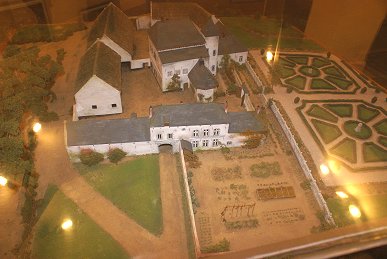
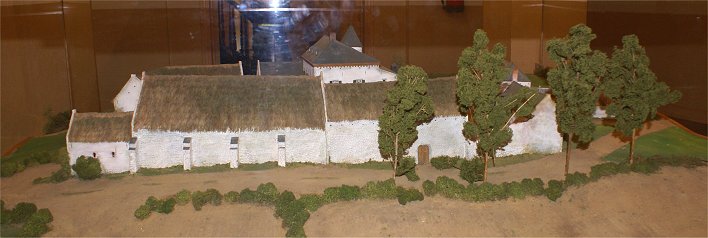
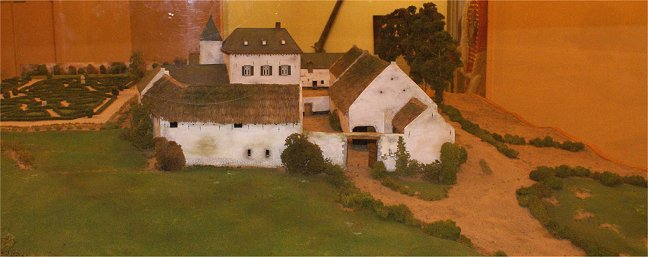 |
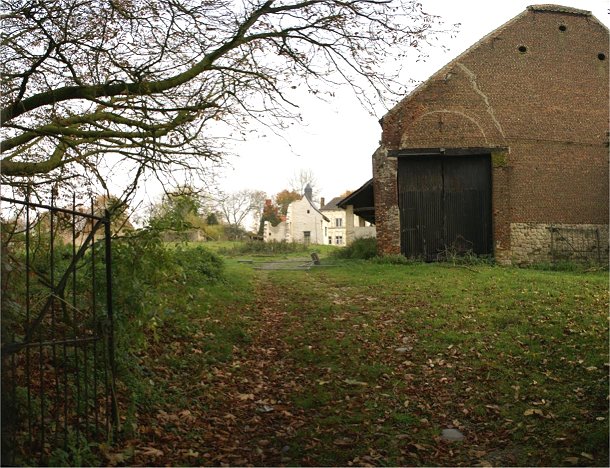 |






